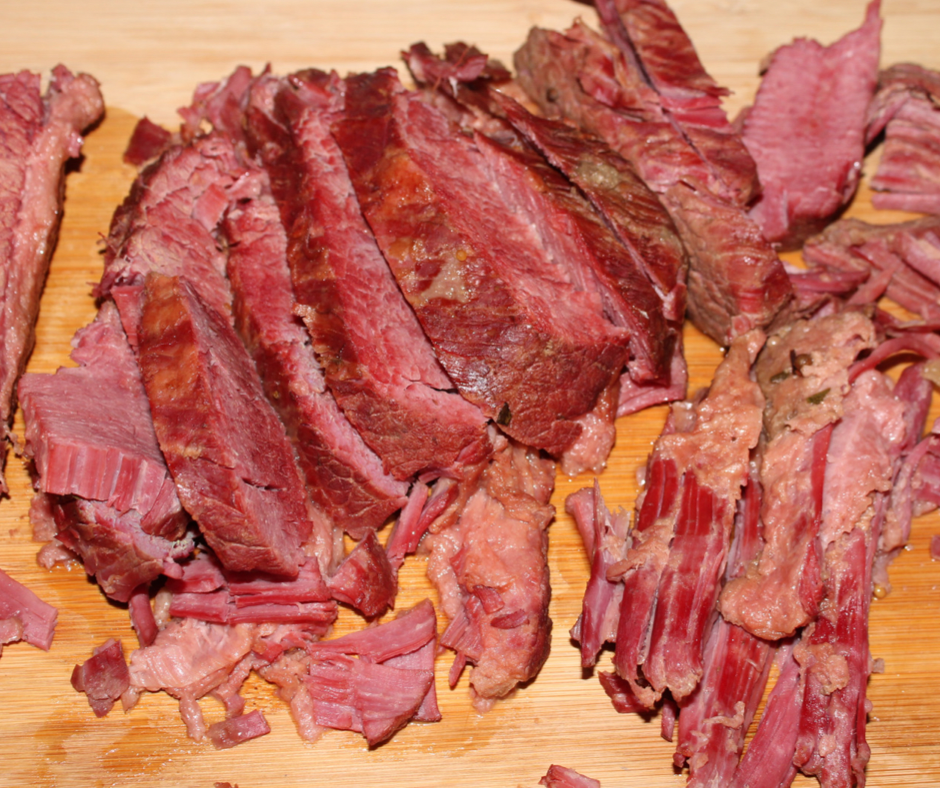
Chow Line: food safety knowledge, not luck, needed to cook corned beef safely for St. Patrick’s Day
I’m new to cooking and plan to make corned beef for the first time to celebrate St. Patrick’s Day this year. Do you have any tips to prevent the potential for any foodborne illnesses?
That’s a great question, considering that corned beef, just like any other raw meat or poultry item, should be handled with care to lessen the potential for foodborne illnesses. That safe handling starts the moment you purchase the meat in the grocery store or butcher shop.
Uncooked, whole corned beef is typically sold wrapped in packaging that still contains the salt brine with spices used to cure or pickle the beef. Be sure to check the sell-by date on the package of the meat, and make sure to store the meat unopened in the refrigerator for no more than 5 to 7 days from that date. If you purchase corned beef with a use-by date, make sure to cook it by that date, advises the U.S. Department of Agriculture.
If you want to store uncooked corned beef longer than 5 to 7 days, it is best to take the meat out of its packaging, drain the brine, and rewrap the meat in a freezer-safe container or plastic wrap. Freezing corned beef in its original packaging with the brine could result in rancidity and texture changes due to the salt content of the brine, according to FoodSafety.gov.
Corned beef is a brisket cut of meat, meaning that it is cut from the breast or lower chest of the cow. As such, it is a tougher cut of meat that requires a longer time to cook in moisture to tenderize the meat.
When cooking—regardless of the method you use—make sure the meat has reached an internal temperature of at least 145 degrees Fahrenheit, while some prefer the meat to reach an internal temperature of 160 degrees. Although some people will test corned beef for its doneness with a fork to measure its tenderness, the best way to ensure it is fully cooked is to use a meat thermometer to check for the minimum internal temperature, the USDA says.
When checking the temperature of meat or poultry, the thermometer should be placed in the thickest part of the meat, and the temperature should hold for at least 15 seconds.
Don’t worry if the meat is still pink when it’s done. Because of the nitrite used in the curing process of corned beef, the pigment in the meat remains pink. Corned beef can be cooked safely in several ways, according to the USDA:
- In the oven, cook the meat with the fat side up, covered, with about 1 inch of water in the pan. The meat should cook at 350 degrees for 1 hour per pound.
- On the stovetop, cook the meat in a large, covered pot with water, with the fat side up. Bring the water to a boil, and then reduce the heat and simmer for 1 hour per pound.
- In a slow cooker, cover the meat with water and cook it on the high setting for 5 to 6 hours. The meat can also be cooked using the high setting for the first hour, followed by 10 to 12 hours using the low setting.
- In the microwave, cover the meat with water and cook it in a large casserole dish covered with a lid or vented with plastic wrap. Cook the meat for 20 to 30 minutes per pound on medium-low, turning the meat over and rotating the dish at the halfway point. Cook the meat to 160 degrees, and then check the temperature in at least two places to account for potential cold spots.
Lastly, store leftover corned beef within 2 hours of cooking, recommends FoodSafety.gov. To store the meat, cut it into several pieces, place it in a shallow container, and store it in the refrigerator for no more than 3 to 4 days. Carefully wrapped corned beef can be stored in the freezer for up to 3 months, the federal agency says.
Chow Line is a service of The Ohio State University College of Food, Agricultural, and Environmental Sciences and its outreach and research arms, Ohio State University Extension and the Ohio Agricultural Research and Development Center. Send questions to Chow Line, c/o Tracy Turner, 364 W. Lane Ave., Suite B120, Columbus, OH 43201, or turner.490@osu.edu.
